Spectroscopy Kits

Our new Spectroscopy Kits provide users with versatile tools for understanding absorbance, reflectance, and other techniques.
The Spectroscopy Kits are ideal for educational institutions, research labs and individuals seeking a complete solution for hands-on experiments in fields including physics, chemistry, biology, and environmental science. Each kit provides the essential components -- spectrometer, light source, optical fiber and sampling accessories -- required for performing a wide range of spectroscopic experiments, making it a valuable tool for learning and research. Each kit also comes with FREE software for data acquisition, analysis, and visualization.
Choosing Your Kit
Focused Kits vs. General Kits
In assembling these kits, we've drawn on our vast experience helping customers configure setups and have considered each user's expertise level, measurement objectives, and performance expectations. We have optimized kits for a specific application type (Focused Kit) or for a certain sample state (General Kit).
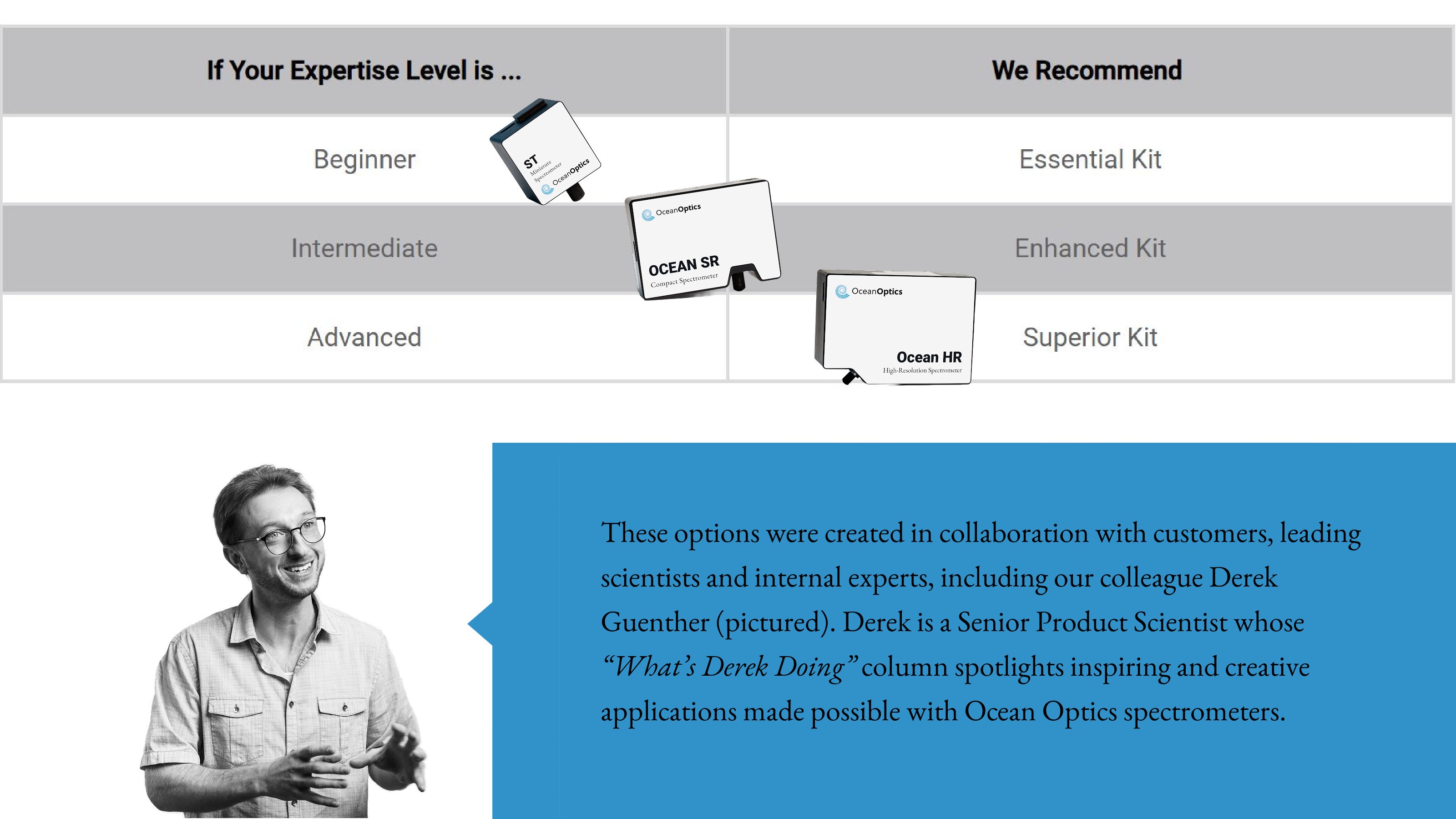
General Kits: Choose the Right Kit in 3 Questions
- What are you measuring? - Solid, Liquid, Plasma
- How big is your sample? - Small or Bulk
- What are your performance expectations? - Essential, Enhanced, Superior

Solids
Essential. The ST-NIR (645-1085 nm) microspectrometer offers great response at higher wavelengths, which is ideal for measuring reflective color and characterizing solid samples.
Enhanced. The SR-6XR (190-1050 nm) broadband spectrometer offers balanced spectral response, providing consistent results for reflection of solid samples across its entire wavelength range.
Superior. The HR-6XR (190-1100 nm) offers high sensitivity, extended range and the optical resolution performance of a large-bench spectrometer in a small-bench footprint.
Pro Tip: If your sample is small -- 50 mm x 50 mm or less -- an integrating sphere offers great versatility and high repeatability. If your sample is large (bulk) and requires a larger sample area to be scanned, we recommend a reflection probe.
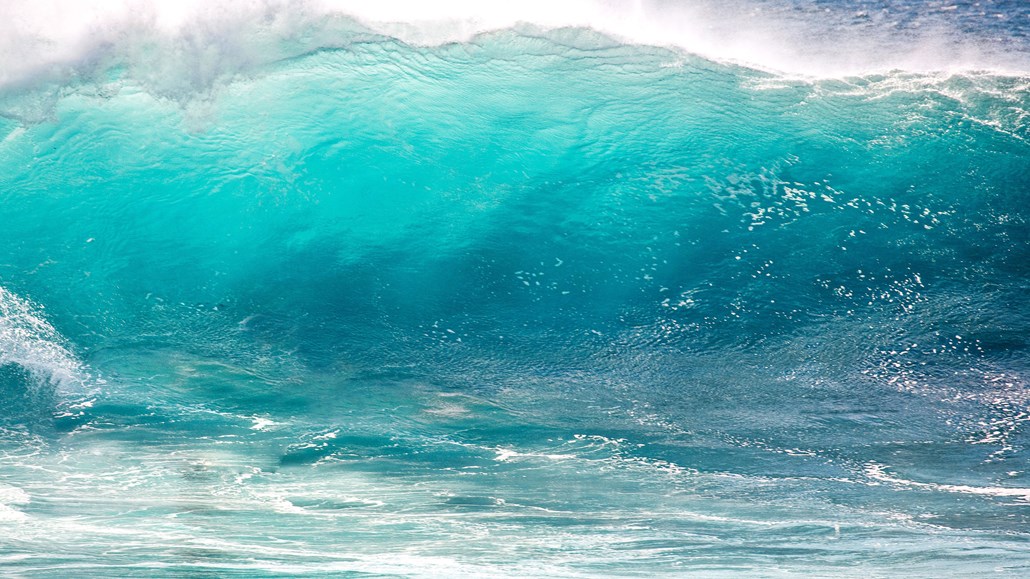
Liquids
Essential. Use the ST-VIS (350-810 nm) spectrometer kit for analysis of liquids from beverages to industrial fluids, where color can be correlated to concentration.
Enhanced. Bio-fluids almost always have useful UV-range information, and the SR-2XR (220-1050 nm) gives full UV-VIS-NIR data to see as much critical activity as possible.
Superior. See the same UV trends as with the SR-2XR-based kit but with heightened peak resolution to deconvolute the messiest mixes.
Pro Tip: For small-volume samples (1-3.5 mL), we recommend standard cuvettes, which provide repeatable sample characterization and variable pathlengths. For larger vessels and high-volume samples, your best bet is a transmission dip probe, which allows you to continuously measure fluids with variable pathlengths and can be integrated into process streams for in situ measurements.
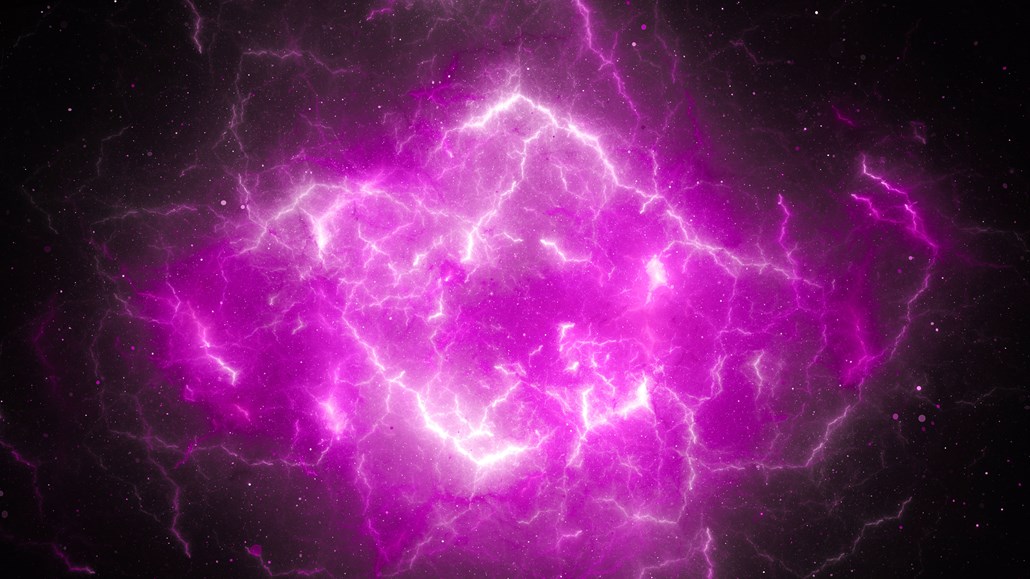
Plasma/Emission
Essential. The ST-UV (185-650 nm) microspectrometer allows real-time tracking of end-point and process conditions. Or measure biological samples that fluorescence when exposed to UV excitation light.
Enhanced. The SR-4XR (220-1050 nm) spectrometer detects both UV and NIR emissions to confirm low-power or non-visible plasmas, plus low fluorescence intensity.
Superior. The HR-4XR (220-1100 nm) high-resolution spectrometer is a combination of ultra-wide wavelength range with sharp and tight resolution. Ideal for identifying emission peaks in plasmas and other samples.
Pro Tip: When choosing a kit, always consider first what you're trying to accomplish. Whether it's plasma monitoring or fluorescence detection, each measurement challenge presents a new set of expectations -- and a path to the best kit for your needs.
Focused Kits
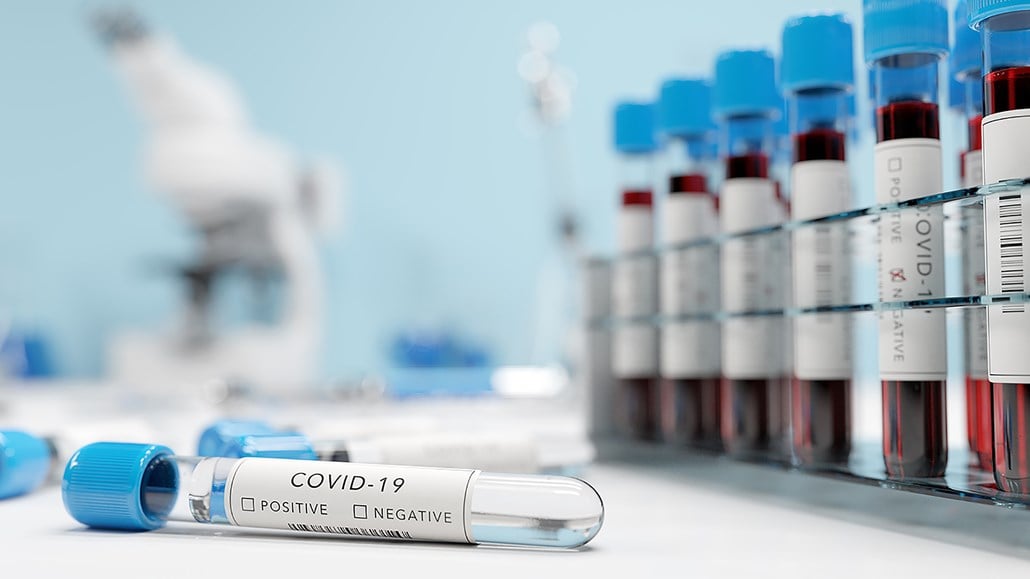
BioFluid
Essential. ST-UV (185-650 nm) microspectrometer captures real-time protein concentration measurements using a dip-probe.
Enhanced. SR-2UVV (220-910 nm) broadband spectrometer provides great UV response and allows stable baseline correction.
Superior. When dealing with complex biofluid mixtures, deconvolution requires a high-resolution spectrometer like the HR-2UVV (220-880 nm) to characterize and isolate signals.
Pro Tip: Is your sample >10mL? Our transmission dip probe is ideal for integration into bioreactor head ports.

Color
Essential. Use the ST-VIS spectrometer (350-810 nm) and integrating sphere to measure reflected color of solid surfaces.
Enhanced. For broader spectral coverage and greater thermal stability, the SR-6UVV spectrometer (200-900 nm) anchors this integrating sphere-based system.
Superior. A high-resolution HR-6VN spectrometer (350-1025 nm) and integrating sphere enable reliable color matching of samples such as LEDs (emissive color) or finished goods (reflective color).
Pro Tip: It's more of a box than a sphere, but either way your integrating sphere is the go-to tool for repeatable color measurements.
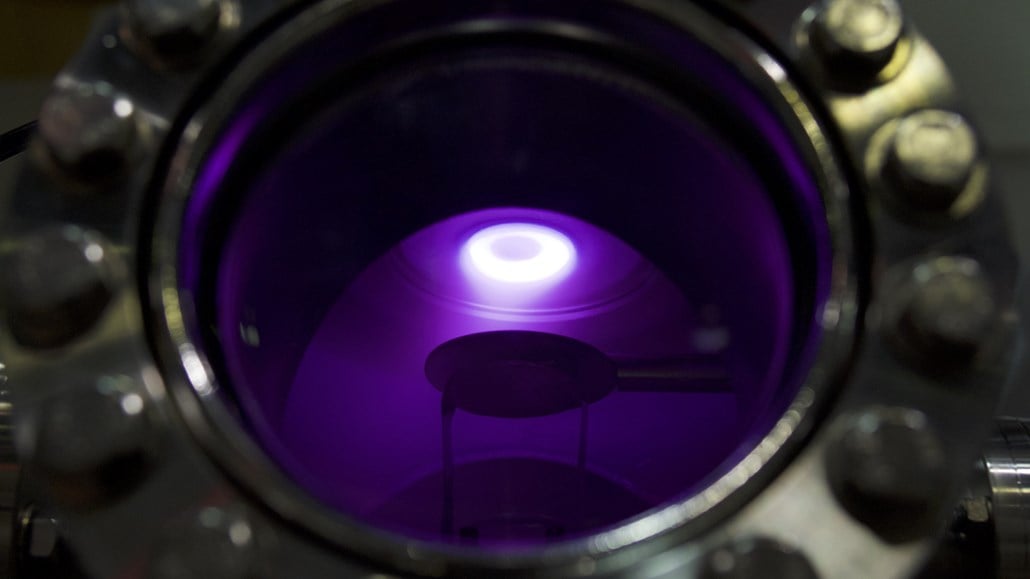
OES
Optical Emission Spectroscopy
Essential. With an ST-UV microspectrometer (185-650 nm), this kit enables real-time identification of emission lines in plasmas and other samples.
Enhanced. The extended-range SR4 spectrometer (220-1050 nm) is coupled to a cosine corrector to collect low-power emissions from 180° FOV.
Superior. In this kit, the HR4 (220-1100 nm) delivers a winning combination of ultra-wide wavelength range and high resolution.
Pro Tip: Consider adding vacuum feedthroughs and similar accessories for use with plasma chambers. Options are available for different sample interface setups.